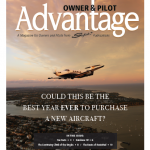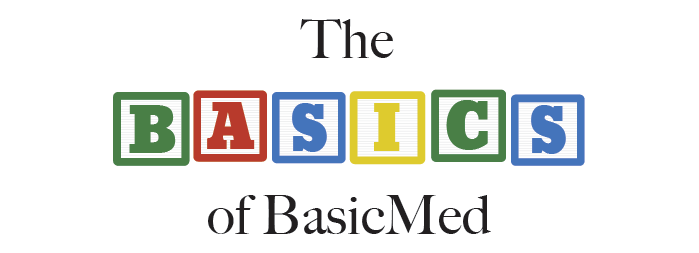As of May 1, 2017, pilots have a new option to meet FAA medical certification standards and continue flight operations. Third Class Medical Reform, or BasicMed as it’s termed, is the culmination of many years of work spearheaded by The Aircraft Owners and Pilots Association (AOPA). In a sign of what can hopefully be things to come throughout the changing FAA landscape, this new rule takes a common sense approach to a topic many pilots will face at some point in their flying career: how do you continue flying when you can’t pass a Third, Second, or First Class medical exam but are otherwise a healthy individual? In its simplest form, there are 4 steps to complete the BasicMed process:
Step 1 – Fill out the Pilot Information (Section 2) on the Comprehensive Medical Examination Checklist
Step 2 – Visit your doctor for an exam specific to your BasicMed requirement. Have your doctor fill out the remaining portion of the Medical Examination Checklist. This exam is required at least once every four years to the date of your last exam.
Step 3 – After completing both steps 1 and 2, visit AOPA online to take a BasicMed course.
Step 4 – After successfully completing the course and passing a quiz, you will be able to print out a BasicMed certificate of completion to be added to your logbook along with the FAA Comprehensive Medical Examination Checklist completed by your doctor. This exam (and quiz) must be completed every two years to the end of the month of your last completion.
After completing these steps, all that is left to do is fly!
This new rule not only has the ability to extend pilot’s flying careers but also outlines the types of aircraft and flight profiles that are still available for one taking advantage of the new rule.
Operating Limitations under BasicMed
• Aircraft with a maximum certificated takeoff weight of up to 6,000 pounds
• No more than six occupants (1 pilot / 5 passengers)
• Flight conducted within the United States
• Flying at an indicated airspeed of 250 knots or less
• Flying at an altitude at or below 18,000 feet mean sea level
• No flying for compensation or hire, except in limited situations permitted by FAR 61.113 such as charitable flying, sharing costs of the flight with passengers, and flying in conjunction with a business, only if the flight is incidental to that business and does not carry any passengers or property for compensation or hire.
For a complete breakdown of what is allowed and what isn’t under BasicMed and to start the process for yourself, visit AOPA on their website: https://basicmedicalcourse.aopa.org.
 Find this article & more in the Summer 2017 Skytech Advantage Owner & PiIot Magazine.
Find this article & more in the Summer 2017 Skytech Advantage Owner & PiIot Magazine.
Click here to subscribe or read previous magazines.

